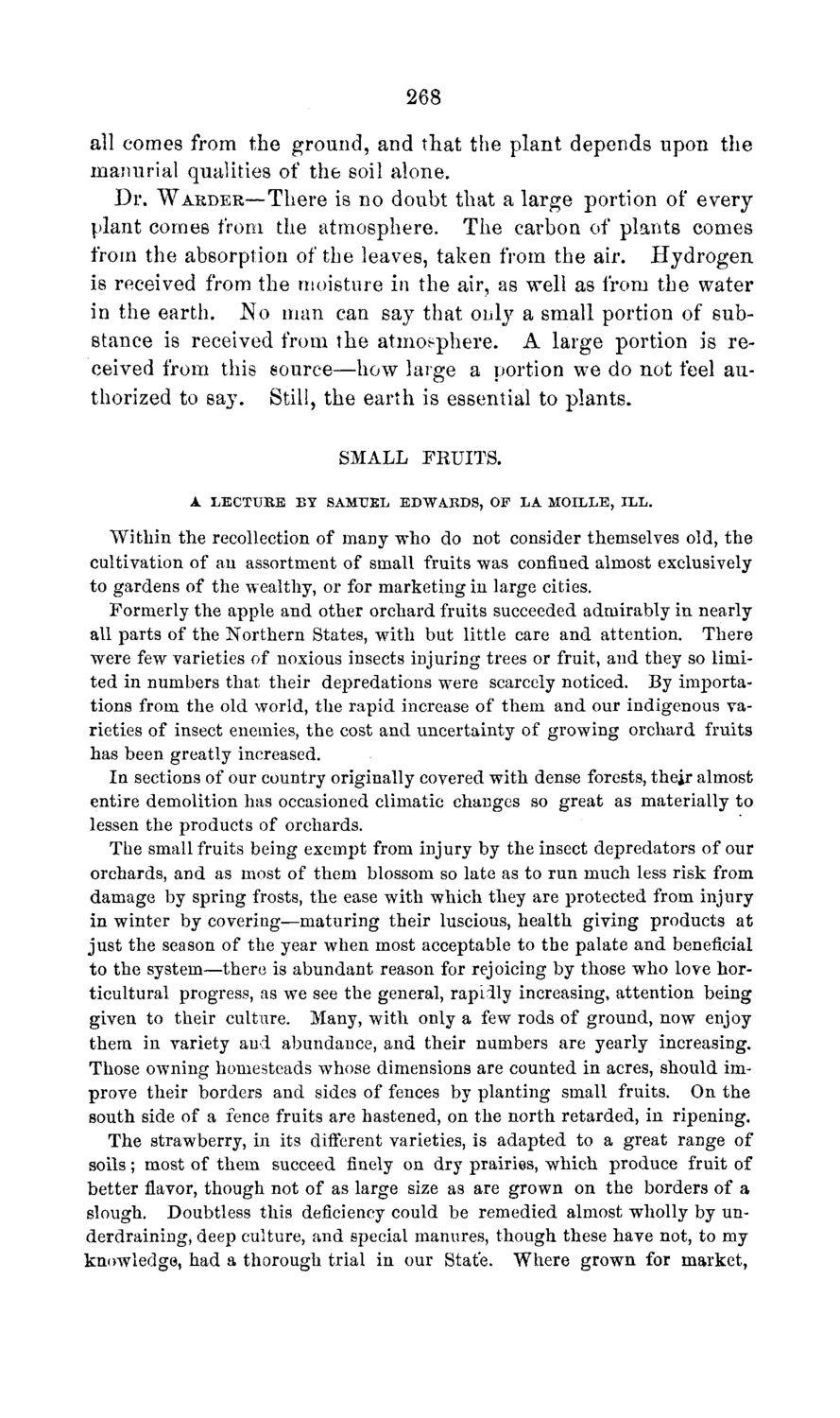| |
| |
Caption: Board of Trustees Minutes - 1869
This is a reduced-resolution page image for fast online browsing.

EXTRACTED TEXT FROM PAGE:
268 all comes from the ground, and that the plant depends upon the maiuirial qualities of the soil alone. Dr. WARDER—There is no doubt that a large portion of every plant comes from the atmosphere. The carbon of plants comes from the absorption of the leaves, taken from the air. Hydrogen is received from the moisture in the air, as well as from the water in the earth. No man can say that only a small portion of substance is received from the atmosphere. A large portion is received from this source—how large a portion we do not feel authorized to sa}7. Still, the earth is essential to plants. SMALL FRUITS. A LECTTJEE BY SAMUEL E D W A R D S , O F L A M O I L L E , I L L . Within the recollection of many who do not consider themselves old, t h e cultivation of an assortment of small fruits was confined almost exclusively to gardens of the wealthy, or for marketing in large cities. Formerly the apple and other orchard fruits succeeded admirably in nearly all parts of the Northern States, with but little care and attention. There were few varieties of noxious insects injuring trees or fruit, and they so limited in numbers that their depredations were scarcely noticed. By importations from the old world, the rapid increase of them and our indigenous varieties of insect enemies, the cost and uncertainty of growing orchard fruits has been greatly increased. In sections of our country originally covered with dense forests, their almost entire demolition has occasioned climatic changes so great as materially t o lessen the products of orchards. The small fruits being exempt from injury by the insect depredators of our orchards, and as most of them blossom so late as to run much less risk from damage by spring frosts, the ease with which they are protected from injury in winter by covering—maturing their luscious, health giving products at just the season of the year when most acceptable to the palate and beneficial to the system—there is abundant reason for rejoicing by those who love horticultural progress, as we see the general, rapidly increasing, attention being given to their culture. Many, with only a few rods of ground, now enjoy them in variety and abundance, and their numbers are yearly increasing. Those owning homesteads whose dimensions are counted in acres, should improve their borders and sides of fences by planting small fruits. On t h e south side of a fence fruits are hastened, on the north retarded, in ripening. The strawberry, in its different varieties, is adapted to a great range of soils; most of them succeed finely on dry prairies, which produce fruit of better flavor, though not of as large size as are grown on the borders of a slough. Doubtless this deficiency could be remedied almost wholly by underdrawing, deep culture, and special manures, though these have not, to my knowledge, had a thorough trial in our State. Where grown for market,
| |